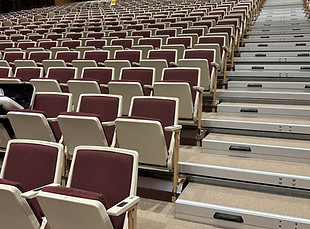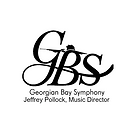
Is this your first time? Some Frequently Asked Questions

What Is A Symphony Orchestra?
A symphony orchestra is a collection of up to about 100 musicians, and the Georgian Bay Symphony on average has 50-60 musicians performing. These musicians play instruments of 4 basic types; strings (violins, violas, cellos and double basses), woodwinds (flutes, clarinets, oboes, bassoons), brass (trumpets, tubas, trombones, horns) and percussion (drums, bells, cymbals, occasionally piano). To learn more about an Orchestra Click Here.

Will I Recognize The Music?
You will probably recognize some of the music, even if you don’t think that you will. Classical music has influenced other music genres over time, so you may hear some similarities to songs you are familiar with. Classical music is often used in commercials, movie soundtracks, themes on television, or in retail shops and elevators, so chances are you have already had more experience with it than you think you have.

Do I Need To Do Research?
There is no need to study classical music before attending a concert. Some people enjoy preparing for a performance in advance by listening to other renditions of the pieces, but this is by no means a requirement. There are often Notes in the program that give excellent background information on the piece being performed. We often publish this information ahead of time on our website in the News section.

How Long Is Intermission?
Most concerts have an intermission about half way through. This gives both the musicians and the audience a break of about 15 to 20 minutes. This break can help you to enjoy the second half of the performance just as much as you did the first half.

Can I Bring Children?
It is up to the parents’ discretion whether or not to bring children to the symphony. Children attending a concert should be seated with you, and if they become disruptive you should take a break outside of the concert. Here's a great resource to help with your decision.

Perfume Or Cologne?
In the close confines of the concert area, any scents will affect the people who are allergic to them more than usual. We are sharing the air, so we ask that you go scent-free for the concert so that everyone can enjoy it.

Where Do I Park?
There is free parking available at East Ridge, our venue as well as additional free parking next door at thanks to Georgian College.

Can I Take Photographs?
No pictures, videos, or audio recordings may be taken during a performance as it may become distracting. Any recording devices should be turned off before the concert begins or left outside.

How Long Is The Concert?
Each concert will vary slightly in length depending on the theme of the event. They are usually between 90 minutes and 2 hours, with intermission

What Is The First Chair's Role?
The first chair, known as the Concertmaster, sits in the first chair of the first violin section and plays a leadership role within the orchestra. This is who will signal to begin tuning at the beginning of the concert and is the last musician to take their seat on stage. Currently our Concertmaster position is being held by Lucia Barcari.

When Should I Applaud?
At the beginning of the concert, the concertmaster will come onstage, and the audience applauds as a welcome and a sign of appreciation for all of the musicians. After the musicians have finished tuning, the conductor and possibly the soloist will enter, and will be welcomed with more applause. While most musicians will not object to any applause, most people wait until the entire piece is over to clap again, including throughout the small breaks between movements or sections. Your program will list the movements of each piece so that you can follow along, but if you do clap before the piece is over, don’t worry. It’s only been in the last 50 years that audiences have stopped applauding between movements, so let yourself enjoy the music instead of worrying about whether or not you are allowed to clap. The conductor will signal that it is the end of a piece by lowering their arms and turning to face the audience. If you’re still unsure, it’s a safe bet to just follow along with what the rest of the audience is doing!

What Should I Wear?
There is no dress code. Wear whatever will help you to enjoy the symphony as much as possible! While most people choose to wear business or dressy casual clothes, there will be a variety of styles from jeans to cocktail dresses; so choose what you are most comfortable wearing. The Musicians tend to dress in a simple uniform style, such as black clothes, so that the audience can focus entirely on the music. However a soloist may dress differently from the rest.


